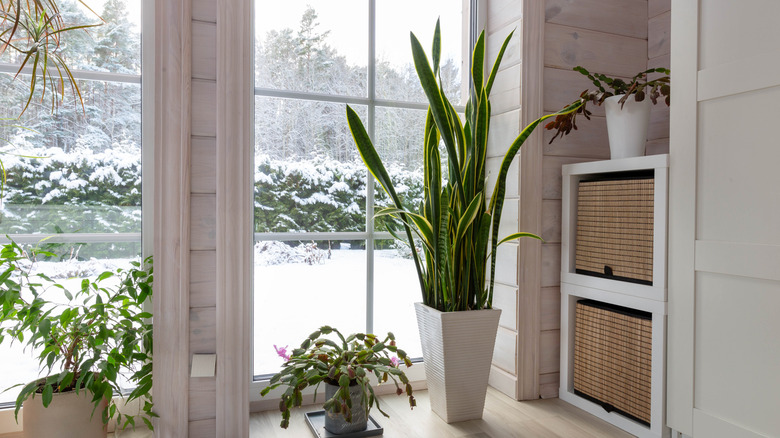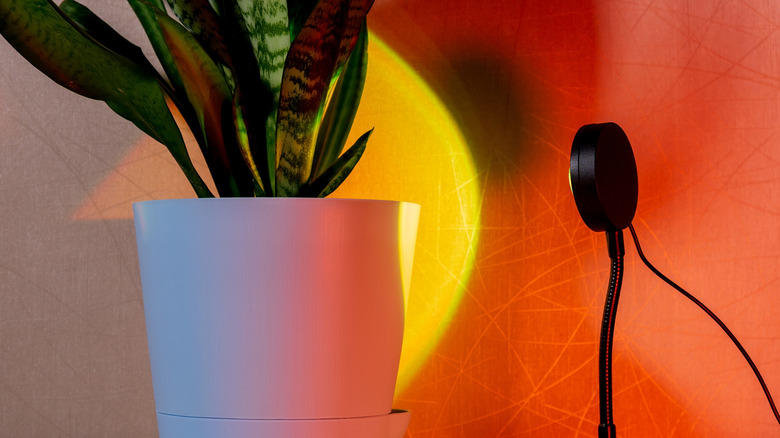Keep Your Snake Plants Healthy All Winter With These Simple Tips
We may receive a commission on purchases made from links.
Whether you're growing them indoors or outdoors, snake plants (Dracaena trifasciata) are incredibly low maintenance, making them ideal for beginner gardeners and new house plant enthusiasts. Despite their minimal needs, there are some extra care steps you'll need to take to keep your snake plant happy and healthy during the winter season. For outdoor snake plants, one of those steps is to bring your plant indoors as soon as temperatures drop below 50 degrees Fahrenheit.
Additionally, you may need to invest in extra lighting to make up for the shortened winter days — failing to provide enough light for the plant to truly thrive is one of the biggest mistakes people make with their snake plants. Although you can get away with neglecting your snake plant for a time, if you want the plant to boast big, healthy leaves and eventually produce a flower, these extra care steps will go a long way, especially in the winter. So if you're ready to have the most vibrant snake plant on the block, here are some pointers for caring for your snake plant over the winter.
Winter care tips to follow for healthy snake plants
Snake plants thrive outdoors in UDSA Hardiness Zones 10 through 12, and can be grown as outdoor perennials. However, even in those zones, the plants can not tolerate temperatures below 50 degrees Fahrenheit. In the winter when temperatures drop past that point, you'll need to bring your outdoor snake plants indoors to avoid causing permanent damage to the foliage. Whether you're working with an indoor or outdoor plant, giving it too much attention (aka overwatering) is a big no-no, as snake plants are susceptible to root rot. This is especially true in the winter when your plant has entered its dormancy phase. Depending on the humidity levels in your home, you will only have to water your snake plant in the winter about once per month (sometimes even less).
The same goes for fertilization — avoid fertilizing your snake plant in the winter as it can't effectively use those nutrients during dormancy. While snake plants can technically survive low light conditions, they will always perform better when given a good amount of sun or artificial light. To make up for the lack of daylight during the winter, you might consider investing in some indoor grow lights. Just be sure to place your plant roughly 24 to 48 inches away from the light to avoid burning the leaves. Since you're already bringing the plant indoors, you might as well check for signs that it's time to repot your trusty snake plant as well. Late winter or early spring is typically the best time for repotting.

